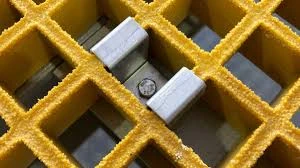
-
 Afrikaans
Afrikaans -
 Albanian
Albanian -
 Amharic
Amharic -
 Arabic
Arabic -
 Armenian
Armenian -
 Azerbaijani
Azerbaijani -
 Basque
Basque -
 Belarusian
Belarusian -
 Bengali
Bengali -
 Bosnian
Bosnian -
 Bulgarian
Bulgarian -
 Catalan
Catalan -
 Cebuano
Cebuano -
 China
China -
 China (Taiwan)
China (Taiwan) -
 Corsican
Corsican -
 Croatian
Croatian -
 Czech
Czech -
 Danish
Danish -
 Dutch
Dutch -
 English
English -
 Esperanto
Esperanto -
 Estonian
Estonian -
 Finnish
Finnish -
 French
French -
 Frisian
Frisian -
 Galician
Galician -
 Georgian
Georgian -
 German
German -
 Greek
Greek -
 Gujarati
Gujarati -
 Haitian Creole
Haitian Creole -
 hausa
hausa -
 hawaiian
hawaiian -
 Hebrew
Hebrew -
 Hindi
Hindi -
 Miao
Miao -
 Hungarian
Hungarian -
 Icelandic
Icelandic -
 igbo
igbo -
 Indonesian
Indonesian -
 irish
irish -
 Italian
Italian -
 Japanese
Japanese -
 Javanese
Javanese -
 Kannada
Kannada -
 kazakh
kazakh -
 Khmer
Khmer -
 Rwandese
Rwandese -
 Korean
Korean -
 Kurdish
Kurdish -
 Kyrgyz
Kyrgyz -
 Lao
Lao -
 Latin
Latin -
 Latvian
Latvian -
 Lithuanian
Lithuanian -
 Luxembourgish
Luxembourgish -
 Macedonian
Macedonian -
 Malgashi
Malgashi -
 Malay
Malay -
 Malayalam
Malayalam -
 Maltese
Maltese -
 Maori
Maori -
 Marathi
Marathi -
 Mongolian
Mongolian -
 Myanmar
Myanmar -
 Nepali
Nepali -
 Norwegian
Norwegian -
 Norwegian
Norwegian -
 Occitan
Occitan -
 Pashto
Pashto -
 Persian
Persian -
 Polish
Polish -
 Portuguese
Portuguese -
 Punjabi
Punjabi -
 Romanian
Romanian -
 Russian
Russian -
 Samoan
Samoan -
 Scottish Gaelic
Scottish Gaelic -
 Serbian
Serbian -
 Sesotho
Sesotho -
 Shona
Shona -
 Sindhi
Sindhi -
 Sinhala
Sinhala -
 Slovak
Slovak -
 Slovenian
Slovenian -
 Somali
Somali -
 Spanish
Spanish -
 Sundanese
Sundanese -
 Swahili
Swahili -
 Swedish
Swedish -
 Tagalog
Tagalog -
 Tajik
Tajik -
 Tamil
Tamil -
 Tatar
Tatar -
 Telugu
Telugu -
 Thai
Thai -
 Turkish
Turkish -
 Turkmen
Turkmen -
 Ukrainian
Ukrainian -
 Urdu
Urdu -
 Uighur
Uighur -
 Uzbek
Uzbek -
 Vietnamese
Vietnamese -
 Welsh
Welsh -
 Bantu
Bantu -
 Yiddish
Yiddish -
 Yoruba
Yoruba -
 Zulu
Zulu
exploring efficient methods for streamlining frp laundering
Exploring Efficient Methods for Streamlining FRP Laundering
In recent years, the demand for efficient and effective laundering processes has surged, particularly in the realm of Fiber Reinforced Plastics (FRP). As industries increasingly adopt FRP materials due to their lightweight, high strength, and corrosion-resistance properties, the accompanying need for streamlined laundering techniques has become evident. This article delves into innovative methods aimed at enhancing the laundering process for FRP components, thereby improving overall operational efficiency.
Understanding FRP Laundering Challenges
FRP materials, commonly used in various sectors including aerospace, automotive, and marine, require specific care during laundering to maintain their integrity. Traditional laundering methods often fall short, leading to issues such as material degradation, loss of structural properties, and environmental waste. Furthermore, the reliance on manual processes can introduce variability, resulting in inconsistent outcomes. Consequently, there is a pressing need for more efficient laundering techniques that minimize damage while optimizing resource use.
Automation as a Solution
One of the most promising strategies for streamlining FRP laundering is the integration of automation. Automated washing systems can ensure consistent treatment cycles, reducing the risk of human error. These systems can be programmed to adjust water temperature, detergent concentration, and washing duration based on the specific type of FRP being cleaned. By adopting such technology, companies can not only enhance cleaning efficacy but also reduce labor costs and improve worker safety by minimizing manual handling.
Advanced Cleaning Agents
exploring efficient methods for streamlining frp laundering

Another pivotal method to improve FRP laundering is the development and use of advanced cleaning agents. Traditional detergents can be damaging to the chemical composition of certain FRP materials, leading to deterioration over time. However, recent advancements in biodegradable and FRP-friendly cleaning agents have emerged, enabling effective cleaning without compromising material integrity. These agents can penetrate the surface of the FRP, effectively removing contaminants without causing any adverse interactions, thereby prolonging the life of FRP components.
Recycling Water for Sustainability
Sustainability is a crucial focus in modern laundering practices. Implementing systems that recycle water used in the laundering process can significantly reduce consumption and wastewater generation. By incorporating filtration and purification technologies, laundries can reuse a significant portion of the water used, making the process not only more efficient but also environmentally friendly. Such practices align with global initiatives to conserve water resources and reduce industrial carbon footprints.
Training and Standardization
Efficient laundering is not solely dependent on technology; the human element plays a significant role. Incorporating comprehensive training programs for workers involved in the laundering process is essential. By ensuring that employees are knowledgeable about best practices and the specific needs of FRP materials, organizations can further enhance the effectiveness of their laundering operations. Standardizing the laundering process across different facilities can also lead to more predictable and reliable outcomes.
Conclusion
As the use of Fiber Reinforced Plastics continues to grow in various industries, the need for efficient laundering methods becomes increasingly critical. By leveraging automation, developing advanced cleaning agents, implementing water recycling systems, and focusing on employee training, organizations can optimize their laundering processes, yielding significant benefits in terms of cost savings and sustainability. Embracing these innovative approaches not only ensures the longevity and performance of FRP materials but also contributes to the overall efficiency of industrial operations in an environmentally conscious manner. The future of FRP laundering looks promising, with the potential for continued advancements that will further streamline this essential process.
Latest news
-
Exploring the Benefits of Top Hammer Drifter Rods for Enhanced Drilling PerformanceNewsJun.10,2025
-
High-Precision Fiberglass Winding Machine for GRP/FRP Pipe Production – Reliable & Efficient SolutionsNewsJun.10,2025
-
FRP Pipes & Fittings for Shipbuilding - Corrosion-Resistant & LightweightNewsJun.09,2025
-
Premium FRP Flooring Solutions Durable & Slip-ResistantNewsJun.09,2025
-
Premium Fiberglass Rectangular Tanks Durable & Lightweight SolutionNewsJun.09,2025
-
Tapered Drill String Design Guide Durable Performance & UsesNewsJun.09,2025









